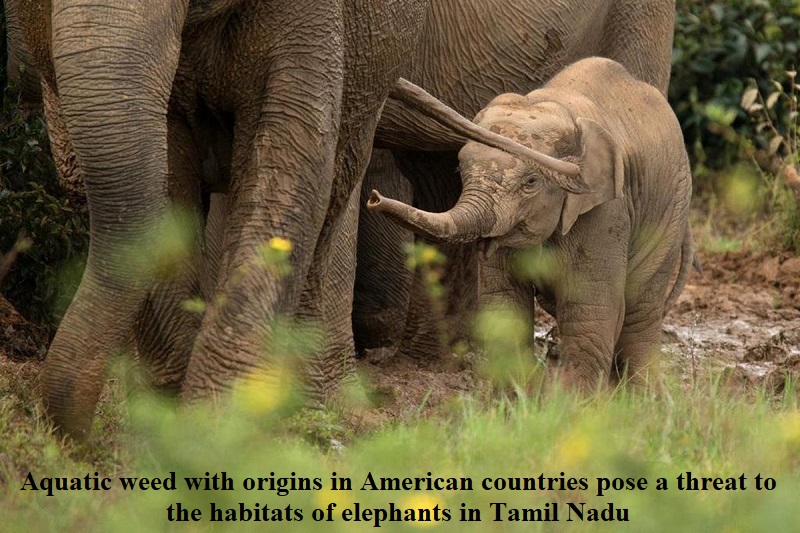
An aquatic weed called Ludwigia peruviana, originally from Central and South American countries, is posing a serious threat to the habitats of elephants in Tamil Nadu state, southern India. The weed has rapidly infested the majority of swamps in the area, where elephants used to find edible grass even during dry months.
The state forest department clarified that most of these swamps are located in private estates where the weed was allegedly sown for ornamental purposes. Incorrect attempts to remove the weed could unintentionally facilitate its further spread.
The invasion of Ludwigia peruviana has significantly reduced the growth of native grasses and plants that elephants and other animals, such as gaur, rely on for food.
The situation is particularly intense in Valparai, within the Annamalai Tiger Reserve, which serves as crucial habitat for elephants migrating between Tamil Nadu and Kerala states.
In the past, the region was known for human-elephant conflicts, but due to the vigilance of the forest departments in Tamil Nadu and Kerala, there hasn’t been a human death due to an elephant attack in over two years.
Swamps are important habitats that support various wildlife, including amphibians and otters, as well as large herbivorous animals. They act as essential water storage areas that need to be preserved. However, the invasion of Ludwigia disrupts the natural ecosystem, causing wild animals to migrate to other regions.
Ludwigia is one of the 22 priority invasive plants in Tamil Nadu, but the state’s removal efforts primarily focus on other invasive species. The removal of Ludwigia has become the responsibility of private estate owners under a law to protect forests in the state.
Eliminating Ludwigia presents a unique challenge compared to other invasive plants because it grows in swamps, limiting the use of machinery to tackle the problem without causing further damage to the ecosystem. Even manual removal is difficult as the plant breaks easily, and new growth can emerge from the root or broken stems that fall back into the swamp.

Post Your Comments